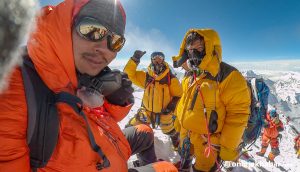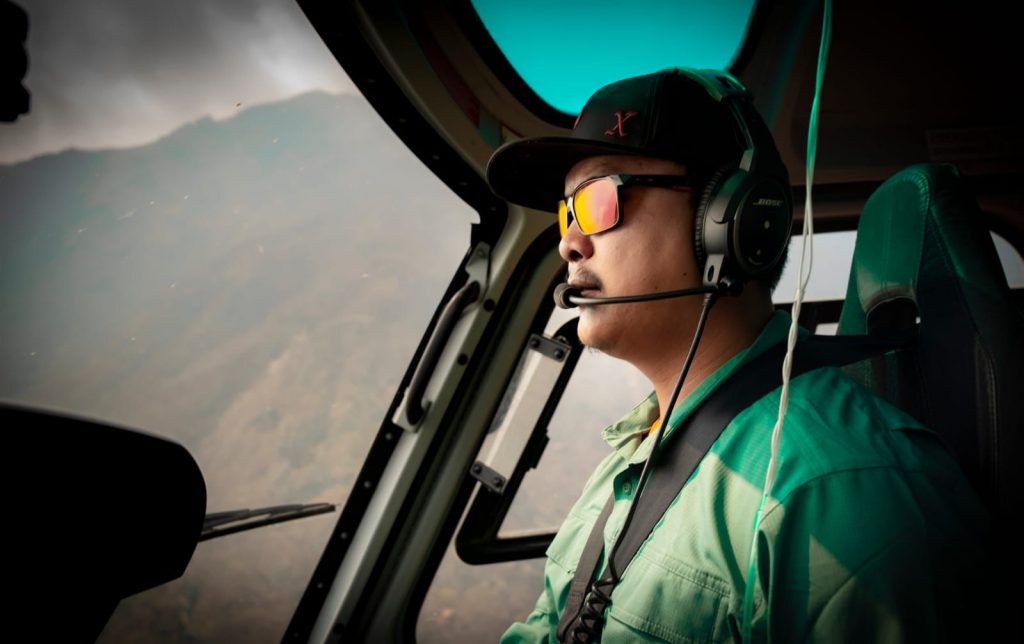
On April 17, Captain Sobit Gauchan received a call from Annapurna base camp. A few climbers, unable to move due to different reasons, needed rescuing and Gauchan, who has become the go-to guy for rescues in Nepal’s mountains, flew to Camp 3 on Annapurna and rescued a French climber and his guide from around 6,500 metres.
“It was very difficult landing there. The helicopter was at its full limit and getting out was a challenge. Thankfully, everything went as planned as I was able to bring the climber down,” says Gauchan.
Two days later, he was back at Annapurna. This time, the mission was to drop rescuers near a crevasse around 6,000 metres to find Indian climber Anurag Maloo. That was not all; he had to bring Maloo down, fly back up to 6,000 metres to get the climbers down while doctors assessed Maloo at the base camp and then fly him to Pokhara’s Manipal Hospital.
“Everything had to be done very quickly. Had I not flown to Dana from Kathmandu on April 19, I think we would have had a different story. Everyone involved in this rescue did a great job,” says Gauchan.
For Sobit Gauchan, this is a normal day at the office. Ever since he became a helicopter pilot a decade ago, he has been involved in hundreds of rescues. He has done it all as he has carried sick patients from the remotest parts of Nepal to those injured during the 2015 earthquake along with many rescues from high in the mountains of Nepal.
Now, Gauchan wants to pave the way for the new generation and wants to raise issues in aviation in Nepal as he believes the right discourses are not taking place for the benefit of the sector in Nepal.
“We only talk after there are problems but we never talk about solutions. Hopefully, things will change,” he says.
His flight to the career
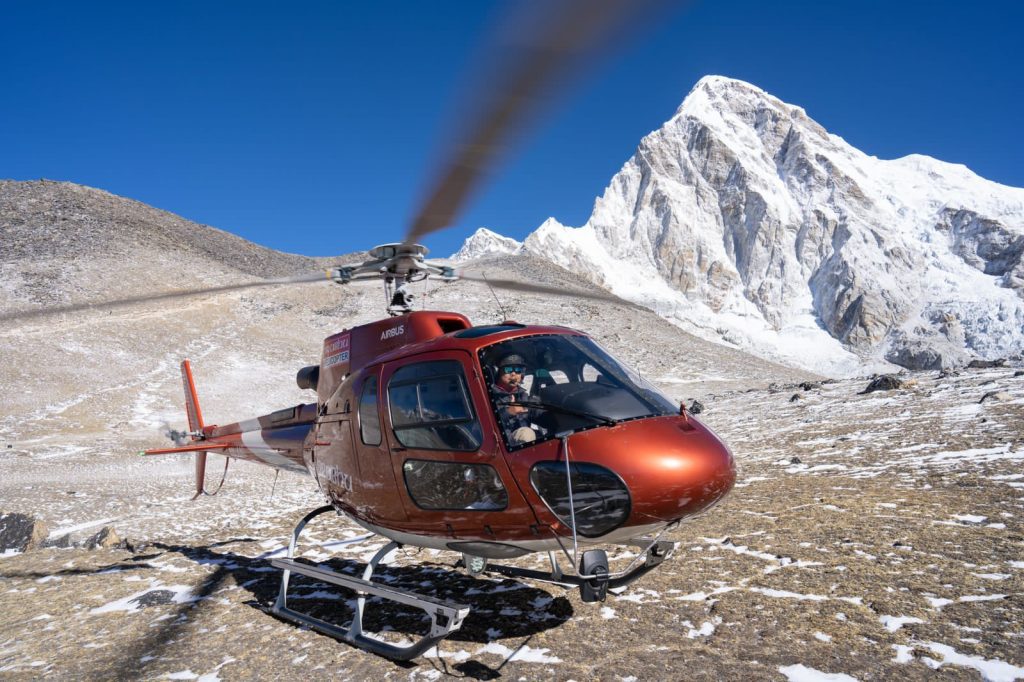
Sobit Gauchan’s journey started in the Philippines. After his dream of joining the British Gurkha troops ended, he decided to go to become an aeroplane pilot. But something changed and he decided to switch to helicopters and the rest is history.
“I cannot remember what, but as I look back, it was the right call.”
After coming back to Nepal, he started working at Air Dynasty as a co-pilot. Since then, he has never looked back as he became a captain in less than a decade.
Compared to when he started, things in the 2020s are different. Even though the industry as a whole has grown, human resource growth is quite poor, Sobit Gauchan says. When he was coming through the ranks, he got a lot of opportunities to fly alongside a senior pilot. That helped him gain experience flying into the remote terrains of Nepal.
Problems and prospects of Nepali heli pilots
But now, with rescues being conducted with only one pilot, he feels that is restricting up-and-coming pilots from gaining important experiences where they can learn from someone senior.
“You learn more when you are in the thick of it rather than just by listening to others or on the simulator,” he says, adding he understands this will not change anytime soon unless the regulators do not do anything about it.
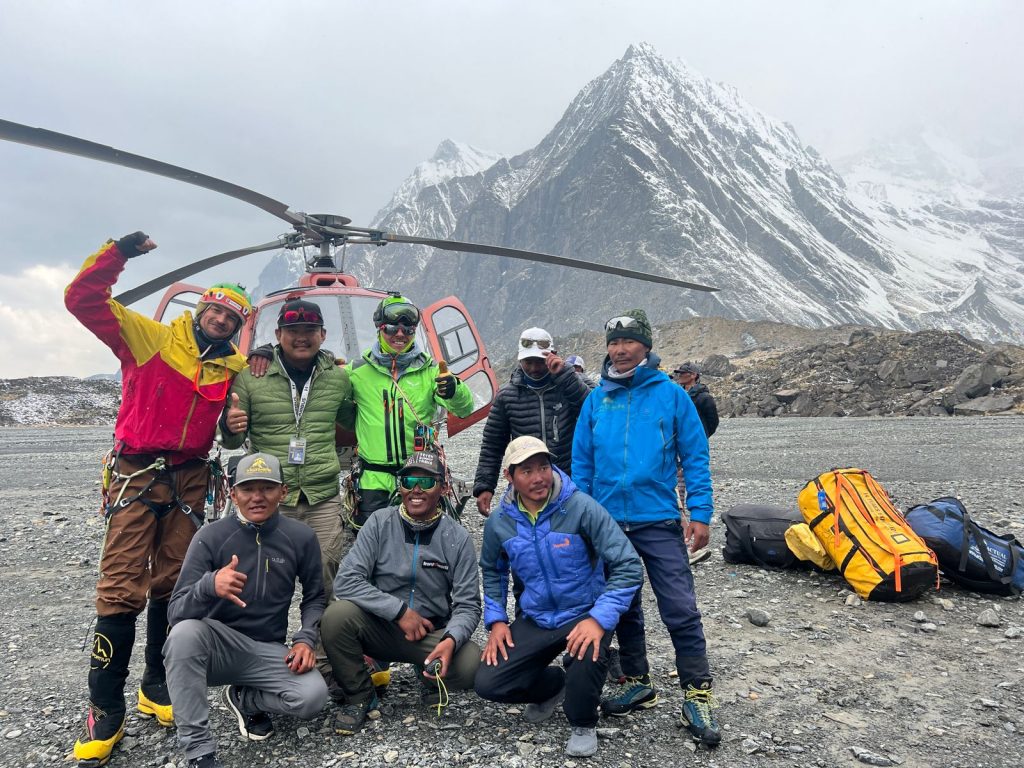
But as pilots, they need more exposure as they have to be calculative with very low to no margin for error. This is especially true when he conducts rescues in the mountains. As decisions need to be taken rapidly, Sobit Gauchan goes to the spot with alternate plans and that has helped him save countless lives.
“I think, in Nepal, we do rescue and risk assessment very fast. That is a great quality and helps as in most terrains we fly to weather changes in an instant.”
His toughest time as a pilot came in the aftermath of the 2015 earthquake. With the entire country reeling, he, like many other pilots, conducted around 100 flights a day. With aftershocks a norm, the situation was extremely chaotic. People wanted him to take them first, leaving him in Hobson’s choice.
“Some had broken hands while others had broken bones. It was hard to not be emotionally involved during those times. I felt I was playing multiple roles. I was a pilot, a counsellor and a doctor all rolled into one,” he says.
Safety concerns
That is a reason Gauchan feels things need to change for helicopter pilots. He believes their role is too dynamic as is their line of work. This, he feels, is resulting in helicopter accidents taking place in the country regularly. And this, in a country like Nepal where aviation rules are as strict as they come, is a major concern.
“Our helicopters and aeroplanes are checked every other day, yet these accidents are taking place. It shows where we are at the moment,” he says.
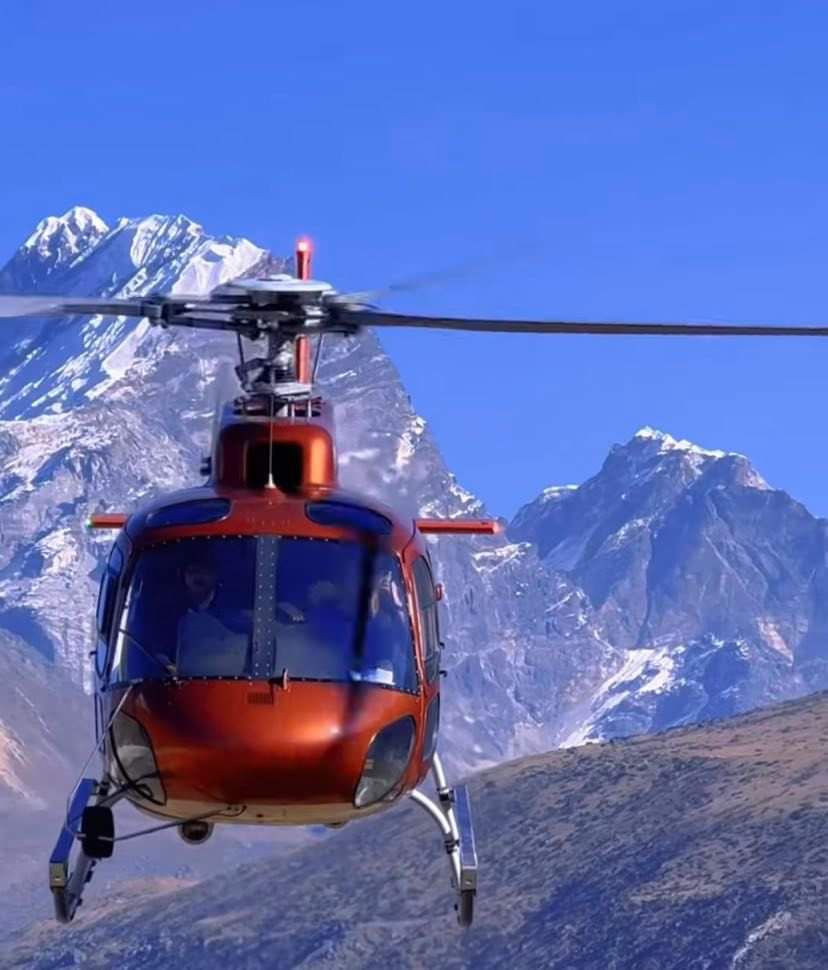
This indicates where the industry is heading as pilots like Gauchan feel they are not getting enough support. They feel the blame is put on them in almost all accidents that take place, but no one, not even the Civil Aviation Authority of Nepal, sees the bigger picture.
Accidents in the past happened due to changing weather and the pilot unintentionally flying into a hill. But in recent cases, it is different as weather factors have not been involved in any of them. The line of work for a helicopter pilot is so dynamic that pilots do not have time to implement their defence mechanism as it changes based on what they are doing.
“One moment we are taking people to Camp 2 on Everest and an hour later, we are taking a load to remote hills in Nepal. That is not all. We also take passengers which makes things really complicated for us as our workload is increasing.”
They also have to fly to unknown areas where they have not flown to and are asked to land on difficult terrains which makes flying quite challenging in Nepal.
“No one cares about us, to be honest,” Gauchan says.
On top of that, each accident is seen differently by CAAN which takes decisions with one particular incident in mind. That, Gauchan feels, is quite unnecessary as it adds to the problem and not the solution.
“The regulators need to be competent. Right now, they are like autocratic rulers who only place orders and do not come up with solutions. This needs to change.”
Gauchan hopes things changes and he wants to continue to focus on raising discourses within the aviation sector. While he does that, he is gearing up to start his own helicopter company through which he wants to provide top-class service and make rescue service oriented.
“I’ve seen people die while I’m rescuing them and felt helpless. I want to ensure that these people are given the best chance to survive when they fly with my company,” he says.
In the long run, he wants to start free services to those who cannot afford helicopter rescues. But, for that to happen, it will take time as he wants to earn the trust of people and then seek donations.
“I want things to be transparent and people to help me with this goal of mine. Hopefully, everything will fall in place,” Gauchan says.






